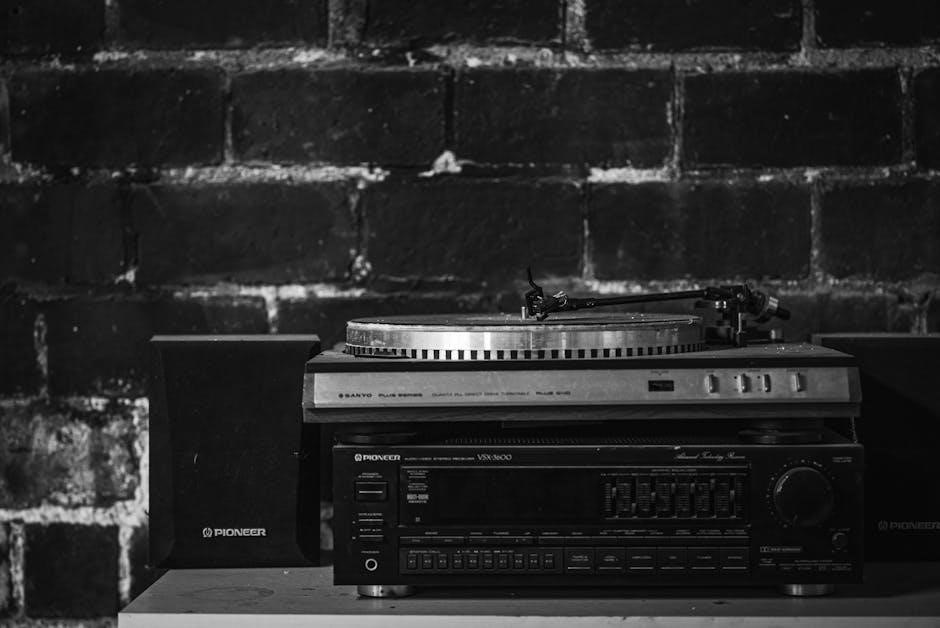Ishkur’s Guide to Electronic Music is a nostalgic, interactive resource created by Kenneth John Taylor. The old Flash version, now preserved by the community, remains a beloved historical artifact.

Overview of the Guide
Ishkur’s Guide to Electronic Music is a comprehensive, interactive resource that maps the vast landscape of electronic music genres. The old version, created by Kenneth John Taylor, features 153 subgenres and 818 sound clips, arranged in a detailed, flowchart-like structure. It covers genres like house, techno, trance, and lesser-known styles such as terrorcore and chemical breakbeat. The guide is both educational and humorous, blending factual information with Ishkur’s subjective opinions. Originally built in Flash, the old version became a nostalgic artifact of early internet culture. Its interactive design allowed users to explore genre relationships, listen to examples, and trace the evolution of electronic music. Despite its outdated format, the guide remains a cherished tool for music enthusiasts and historians alike.

History and Development of the Guide
Ishkur’s Guide was created by Kenneth John Taylor, first released in 2000 as a Flash-based project. Version 2.5, launched in 2003, expanded its scope but was later abandoned in 2005 due to technical limitations. The guide gained a cult following, preserved by fans after Flash’s decline, ensuring its legacy as a historical resource for electronic music exploration.
Origins and Motivation Behind the Guide
Ishkur’s Guide to Electronic Music was born out of Kenneth John Taylor’s frustration with the overwhelming number of microgenres emerging in the late 1990s. As a satirical response to the chaotic landscape of electronic music, Taylor, known as Ishkur, created the guide to provide clarity and humor. The project began as a personal endeavor, influenced by forums and email lists where fans expressed confusion over the genre explosion. Initially, the guide was a Flash-based interactive flowchart, offering a chronological and often opinionated breakdown of genres. Its quirky, nostalgic design and extensive coverage of subgenres made it a cult favorite, becoming a go-to resource for both newcomers and veterans of electronic music culture. Over time, it evolved into a beloved historical artifact, reflecting the evolution of the genre.
Evolution of Versions and Updates

Structure and Content of the Guide
Ishkur’s Guide features an interactive, flowchart-style layout, detailing 153 subgenres and 818 sound files. It visually maps electronic music’s evolution, making it an educational and immersive experience.
Layout and Navigation of the Interactive Guide
The old version of Ishkur’s Guide features a Flash-based interface with a flowchart layout, allowing users to explore electronic music genres through interconnected nodes. Navigation is intuitive, with clickable elements that reveal subgenres and sound samples. The visual structure provides a chronological and hierarchical view of genres, making it easy to trace influences and evolutions. Despite its age, the guide’s interactive design remains engaging, offering a hands-on learning experience for both newcomers and enthusiasts of electronic music.
Main Genres and Subgenres Covered
Ishkur’s Guide to Electronic Music comprehensively explores a vast array of genres and subgenres, providing insights into both popular and obscure styles. The old version delves into major categories like House, Techno, Trance, Breakbeat, Jungle, Hardcore, and Downtempo, while also highlighting lesser-known subgenres such as Terrorcore and Chemical Breakbeat. With over 153 subgenres cataloged, the guide offers a detailed exploration of electronic music’s diversity. Each genre is accompanied by sound samples, allowing users to experience the unique characteristics of each style. This extensive coverage makes the guide a valuable resource for understanding the complex evolution of electronic music and its many offshoots.
The guide transitioned from Flash to HTML5 due to Adobe ending Flash support, ensuring its survival. The community preserved it, adding new features for better accessibility and nostalgic appeal.

End of Flash Support and Its Impact
Community Preservation and New Features

Impact on Electronic Music Culture
Ishkur’s Guide is a seminal resource that shaped electronic music understanding. Its detailed genre classifications and historical context have influenced fans, artists, and the broader culture, fostering discovery and education while remaining a nostalgic artifact of early internet culture.
Influence on Genre Classification and Discovery
Ishkur’s Guide revolutionized the understanding of electronic music genres by providing a comprehensive, interactive flowchart. It categorized over 150 subgenres, offering historical context and sound samples, which helped listeners and artists explore and identify genres. The guide’s visual structure made complex relationships between genres accessible, fostering discovery and education. Its influence extended beyond classification, as it became a tool for artists to trace genre roots and fans to uncover new sounds. The old Flash version, with its quirky commentary, remains a nostalgic yet invaluable resource, preserving a snapshot of electronic music’s evolution and inspiring further musical exploration.
Role in Educating Listeners and Artists
Ishkur’s Guide played a pivotal role in educating both listeners and artists about electronic music’s vast landscape. Its interactive design, complete with sound samples and historical context, made it an invaluable tool for understanding genre origins and evolution.Listeners could explore unfamiliar subgenres, while artists gained insights into stylistic roots and influences. The guide’s detailed flowchart and commentary demystified complex musical relationships, fostering a deeper appreciation for the genre’s diversity. Despite its outdated interface, the old version remains a cherished resource, preserving a unique perspective on electronic music history and continuing to inspire both newcomers and seasoned enthusiasts alike.

Legacy and Continued Relevance
Ishkur’s Guide remains a cherished nostalgic artifact, offering a unique historical perspective on electronic music. Its enduring popularity stems from its role as a comprehensive educational tool and cultural time capsule.
Enduring Popularity and Nostalgia
Ishkur’s Guide to Electronic Music old version remains a beloved blast from the past, evoking nostalgia for early internet culture. Many who explored it in the 2000s recall its quirky, interactive design and vast genre exploration. The guide’s enduring popularity stems from its role as both an educational tool and a time capsule of electronic music’s evolution. Fans often revisit it for sentimental reasons, while newcomers discover its historical significance. Despite outdated elements, its charm persists, making it a cherished resource for understanding the genre’s roots. Its preservation by the community ensures its legacy lives on, bridging generations of music enthusiasts.
Value as a Historical Resource
Ishkur’s Guide to Electronic Music old version serves as a valuable historical resource, documenting the evolution of electronic music genres. Its interactive design and detailed flowcharts provide insights into the chronology and relationships between genres. The guide preserves early internet culture, showcasing how electronic music was explored and categorized in the early 2000s. It offers a unique perspective on the growth of subgenres, making it a vital tool for researchers and enthusiasts alike. The guide’s historical significance is further highlighted by its preservation efforts, ensuring that its content remains accessible for future generations to study and appreciate. Its legacy as a comprehensive archive of electronic music history solidifies its importance in the digital age.

Leave a Reply
You must be logged in to post a comment.